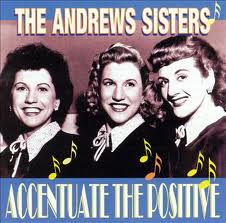The Biology of Hope

October 4, 2017 | Posted in Leading Hartfully, Living Hartfully | By Gaia Hart
I know from my experience and the research on humor and healing, that we need to laugh through a hard time to help us get through it – known as the Biology of Hope (when we anticipate an enjoyable event and laugh at a situation, our good stress, eustress, hormones beta endorphins and growth hormones kick in and help our immune system.)
Here are some proven ways to reduce stress with everything else going on around us:
Wake up 15-30 minutes earlier and get your day started at a more leisurely pace with enough time to have a proper breakfast. You can get much done while it is quiet such as exercising, yoga, meditating, getting your day organized. It also helps to have clothing selected and lunches prepared the night prior so you don’t have to think too much.
Write down everything (and do back-ups) – as we get older, our brains can’t hold all the info it once used to. Give your brain a break and keep all your notes in one place – either electronic, paper, or both so you won’t stress over what will happen to your info if your batteries die. We now know that stress kills our brain – as it also does our heart. Stress affects the hippocampus, the memory and retrieval system of our brains. You know you have brain cells dying from stress when you’re in a grocery store aisle and you have no idea why you are there…stress.
Do it today – stop procrastinating and make a decision. Procrastination and clutter are just postponed decisions. Figure out why you don’t want to make that decision and go about it in a different way, just do it.
The Law of Entropy states that everything without work or force applied to it will break down over time. That includes cars, gardens, our health, communication, or relationships. Focusing on prevention will help alleviate the stress caused by things breaking down. An ounce of prevention is worth a pound of cure.
Get rid of as many irritations, aggravations or energy drains that you can. It’s the culmination of all those little sniggly things that add up to big stress. So fix the broken towel bar, the squeaky door, the rip in your couch, or throw out the pitcher that is too heavy to lift. All those little drains add up to an empty energy tank.
Plan ahead – live for today and plan for tomorrow’s events or emergencies. Have contingency plans in place for the probable causes that may affect you. Living in Germany for 10 years, we had to have a NEO plan in place – a Non-combatants Evacuation Plan. We were supposed to always have at least a half a tank of gas in our car, our medical information and family info easily accessible and important documents within reach in case we had to evacuate in a conflict situation. Friends in California tell me they have an emergency kit in case of fire or Earthquake with all their important items in it near the door. Make sure all your documentation is in order and look towards the future.
~ : Waltzing Ma-Tilda, Don’t Forget to Dance and Enjoy the Music

September 18, 2017 | Posted in Leading Hartfully, Living Hartfully | By Gaia Hart
Taking some time out for dancing, singing, and playing or listening to music can help you reclaim your zip. Test-drive new kinds of music and movement from foreign cultures, from another genre, another time period, or from another region. Discovering a new twist to an old favorite is invigorating. Expand your horizons and become acquainted to new types of art, music, theater, and dance to rev up your creative juices.
Besides being great exercise, using large and small muscles and displaying large and fine motor movements, dancing moves the blood carrying much needed oxygen to all parts of the body, helping us think clearer and also get more in tune with our body and our dance partner. Put on some music and let it move your body, turn up the volume and feel the beat resonate through your bones.
I recently took my mom to see The Blue Man Group perform in Las Vegas. This very unique performance involves lots of drumming from huge drums and other percussion instruments played at a very high decibel level. It gets so loud, that the theatre provides earplugs for the audience. The beat of the drums is so intense that you can feel the beat in your heart and it is a truly moving experience.
Music is a terrific energizer or “calmer-downer”. Your heart and your body react to the rhythmic tonality of music with either a strengthening or weakening affect regardless of your opinion and taste in the music. Since our bodies are made up mostly of water, the vibrations of music can affect our moods.
The more strengthening physiological reactions come from classical music from the Baroque period with soothing, flowing instrumentals such as Mozart, Bach, Beethoven, and Handel. Studies on this “Mozart Effect” have found that students score better on tests after listening to this music and their spatial reasoning performance greatly exceeded similar students who were not either listening or playing Baroque music.
Our brains respond to music of that era because it was created in such an orderly way and our brains respond to order. This music causes the brain to use both of its sides simultaneously because of the symmetry, key relationships, rhythmic pastern contrasts, highs and lows, light and dark, and the way that it was arranged with such organization. Listening to, playing, or singing helps us integrate the left side and the right side of our brains more effectively and thus create more positive energy upon which we can draw. Mental alertness and creativity have been associated with listening to this type of music.
Weakening music includes heavy metal, jazz fusion, or music that has been digitally recorded, because the rhythms are not in alignment with our body’s natural rhythms. It feels more like a machine gun hitting our body than a stroke of a feather. If music soothes the savage beast, just think what it could do to your frazzled nerves, co-workers, kids, angry customers, or pets.
Whether you are listening to it or making it, music affects your entire essence, so choose your music wisely according to your mood, energy level, or need for energy or calmness. Music can be your jumpstart to your new mood. Music on your stereo or in your car with the top down is great, live music is even better. Don’t forget to cut loose once in a while, put on your boogie shoes and cut the rug.
Blah Busting and Contented Cows. . .

August 4, 2017 | Posted in Leading Hartfully, Living Hartfully | By Gaia Hart
The contented cow syndrome – how to keep a happy herd and keep them from wandering off:
- We know that contented cows give more milk and it’s the same with workers – contented workers produce more.
- Identify realistic expectations about the job, responsibilities, and the organization.
- Ensure there is a fundamental match between the job and the person hired to do it – personality styles, work styles, communication and conflict management styles as well as team vs. individual focus. When there is an alignment between personal and organizational values and goals, there is a better fit and longer retention and less stress for the worker.
- Offer frequent feedback and open communication about the person and their work – let them know how they’re doing and acknowledge their efforts. Generation X and Y, in particular have been used to getting feedback every 60 seconds on how they were doing with computer games. A once per year evaluation isn’t going to cut it.
- Focus on flexibility for family and work and ensure there is a good work-life balance program so workers don’t feel overwhelmed, stressed out, burnt-out and rusted out trying to juggle personal and professional responsibilities.
- Cultivate trust, confidence, and honest, open communication between all levels – show you genuinely care for people and combine the heart and the head level in people to bring out the best in them.
Blah –buster tips for beating depression in the workforce:
- Recent labor studies found that depression costs companies nearly $12 billion in lost work each year and more than $11 billion in other costs accrued from decreased productivity. Here are some tips to improve on those statistics.
- Exercise and a healthy diet combined with vitamins.
- Expressing emotions verbally with a therapist or a friend or through journaling.
- Fresh air and sunshine, or at least full-spectrum lighting that mimics the sun’s rays. Studies have found that people are 25% more productive when using full-spectrum lighting and natural light as compared to fluorescent lighting.
Satisfaction with your work, feeling successful and that you are doing something that matters. Find out what you’re good at, what ignites your passion, and what can combine your preferences with a good income.
.: Period-ically Shake Things Up

June 19, 2017 | Posted in Leading Hartfully, Living Hartfully | By Gaia Hart
I have a print of the Story People hanging on my wall that says: “There are special angels whose only job is to make sure you don’t get too comfortable and fall asleep and miss life”. Comfort is good to a certain degree, but too much comfort makes us lazy and complacent, and starts to feel like a rut which is not at all energizing.
If things don’t get shaken up for you, do it yourself just to make things more interesting. Put yourself on the edge again to regain the excitement of a new venture. Risk-taking pumps adrenaline into our systems to energize us. Change may create some anxiety; but when channeled into a positive light, it gives us vitality to create a new perception of our world. Only two things motivate us: moving towards pleasure, or moving away from pain. Where are you heading? Take a look at shaking some old habits and thought patterns. Re-evaluate what is working and what is not working for you right now. Is it time for old habits to go away and new habits to take their place?
Sometimes how we are in the world and the way we do things comes so natural to us that we begin to take them for granted. When we are faced with a different method of operating or a new way of seeing things or doing things, our beliefs are challenged and our thinking is jarred a bit. At that point we need to become clear as to the motives behind our behaviors and really take notice as to why we have the thought processes or the behaviors we have adapted.
Sometimes what we think is true or right may only be cultural. Traveling to developing countries or other foreign lands is a great way to shake up your thinking about how you live and what you consider ‘normal’ ways of being in the world. Learning the whys and hows of another culture helps put our own methodology in perspective.
Being a newlywed later in life, I had quickly learned how my usual ways of living had been shaken and my thoughts stirred as I gained new perspectives on daily routines through the eyes of my then husband. Gaining insight into another gender is another form of a different culture (some would say another planet) and it gives us cause to periodically shake things up with a different point of view. I saw how marriage would be a constant source of inquiry, risk taking, discovery, questioning, learning, and challenge to help both of us to periodically reconsider our old style of being.
`: Accent-uate the Positive

May 19, 2017 | Posted in Leading Hartfully, Living Hartfully | By Gaia Hart
Can this thought be stated enough? I cannot over-emphasize the importance of a positive mental attitude. It runs over everything in its path. A simple method called applied kinesiology or muscle checking actually demonstrates the weakening effect negative thoughts have on the body. By testing the resistance to pressure that is put on the arm of the participant, the tester can tell if the person is thinking negative or positive thoughts by the amount of resistance felt when they try and push down the arm of the participant. This type of checking is an immediate and dramatic proof of the link between mind and body.
Conversely, when the mind gives a positive spin to a negative situation and thinks of the lessons learned or how they would grow from the situation, it actually strengthens the body instead of weakening it and the arm resistance would test more positive. To learn more about this muscle testing method and how to use it to your advantage, check with holistic health professionals.
Accentuating the positive in your life helps give you the strength to deal with daily stressors and sets your thinking to the right frame of mind where you will gain clarity and power to make the right decisions. When we are thinking from a power position and in a resourceful state of mind, our brain can come up with better solutions to life’s problems than when we are in a negative and unresourceful state of mind.
Moving from the cognitive to the physical aspect of accentuating the positive, take a look at how you are accentuating the positive aspects of your physical presence. Audrey is a friend of mine who is an image and style consultant at www.audreybeaulacstyle.com. She is in the business of helping people accentuate their positive attributes and downplay their not so positive features. The positive energy that stems from looking and feeling your best cannot be denied.
From haircut to clothing styles, fabrics, and colors, to jewelry, handbags, shoes, and accessories, Audrey helps her clients figure out their true essence of style, and what’s natural for them. She helps them put it all together so her clients are feeling their very best when they step out into the world. Nothing helps your self confidence and personal energy more than knowing you are putting your very best size seven foot forward in the shoe that fits your style best.
When we are uncomfortable in our clothes or in our own skin, we cannot exude positive energy. When we have confidence in our looks, our energy spills over into other areas of our life. Always play to your strengths and build upon them to boost confidence, self esteem, your sense of style, and personal energy.
How Does Your Organization Measure Up in Employee Satisfaction?

May 4, 2017 | Posted in Leading Hartfully, Living Hartfully | By Gaia Hart
Time to take a hard look at the hard questions and maybe experience some of the hard facts that workers are not all that happy. Better to know now and do something about it than to wait until they jump ship to find out in their exit interview how you screwed up. You are doing exit interviews, aren’t you?
Answer these questions provided by the Forum for People Performance Management and Measurement to see how your organization measures up.
- Are employees empowered to service customers at the highest possible level?
- Does the company recognize the role of employees in retaining customers?
- Is the performance of employees regularly measured?
- Are internal communications truly aligned with external marketing initiatives?
- Does the company’s overall corporate objective include human resource and motivation issues?
- Is the company committed to employee development and training?
- Are employees encouraged to provide feedback and given the tools to do so?
- Is employee feedback incorporated into planning and operations?
- Can the company demonstrate a link between people performance management and sales and profit?
In an annual survey conducted by the Society of Human Resource Management, here are the results concerning work-life programs in corporate America today:
- 57% of companies now offer flextime to their employees
- 56% have wellness programs
- 36% allow telecommuting
- 20% have on-site fitness centers
- 19% offer stress-reduction tips to workers
- 13% offer massage therapy
When employees feel included when they feel a sense of belonging to an organization, when their personal values and goals are in alignment with the organizational values. In order to gain a maximum sense of involvement and engagement in an organization, here are some elements that need to be present to foster dedication, retention, and productivity:
- Intrinsic personal interest and worthwhile work
- Challenge and stimulation
- Significance
- Influence
- Creativity
- Independence
- Control
- Income
- Security
- Personal involvement
- Recognition
- Positive environment
24% of 1000 workers surveyed said they were chronically angry at work. The most common reason cited was a sense that their employers “violated basic promises” and didn’t fulfill “the expected psychological contract with their workers”. The anger problem remains mostly underground and workers simply lose interest in work and become lethargic and uncooperative. What is going on in your office to undermine expectations?
Ask burned-out employees (or less than enthusiastic family members) “What do you really want from your job/school/your life/this family?”. Write down 25 quick answers to help jostle them into thinking about their interests and desires so they can look for a way to pursue them through work/school/family life.
So how does your organization measure up? Are you incorporating these types of things into your environment? If you have other ideas that are working for you, let me know at Gaia@GaiaHart.com.
Love ‘Em, Don’t Lose ‘Em

April 4, 2017 | Posted in Leading Hartfully, Living Hartfully | By Gaia Hart
I’m intrigued about the topic of corporate kindness and how being nice can actually be a competitive advantage. In The Power of Nice: How to Conquer the Business World with Kindness by Linda Kaplan Thaler and Robin Koval, they explain how friendliness and common courtesy along with how you look affects people’s moods and attitudes towards you. Cheerfulness and being polite and respectful spreads more easily than irritability and facial expressions and body language convey more relevant information than a sales pitch.
It’s all about the notion of consequences and karma – people may forget what you say, but they never forget how you made them feel. They remember acts of kindness as well as rudeness. After all, isn’t business and all of the world about relationships and how we connect with others be it inside or outside our organization?
Another book, The Kindness Revolution: The Company-Wide Culture Shift That Inspires Phenomenal Customer Service by Ed Horrell identifies how companies with stellar street reps for service excellence practice extreme kindness, respect, fairness and genuine niceties. He notes that the opposite of kindness isn’t being mean, it’s indifference. When indifference sets in, then it gives people a bad experience and in a world of choices, the customer (internal or external) chooses to walk. In fact, you can say that about any relationship – when indifference and disrespect and unkindness sets in, most people walk.
With a little more corporate kindness and consideration, I would argue that we would have many more gruntled workers than disgruntled workers. And we could actually save lives…one statistic form the Department of Labor cites that the #2 killer of workers on the job is homicide by a disgruntled colleague or customer. What are you doing to impart kindness in your daily activities? What are you doing to add light to the world? What are you doing to save a life today?
- Some tips from Love ‘Em, Don’t Lose ‘Em on keeping good people:
- Support personal and professional growth – are you building their future or are you a barrier
- Enrich the job function – do they have to leave to find growth, excitement, and challenge
- Is your worksite family friendly – do they have to choose between family life and work life or can they balance both
- Expand options for advancement – there are five career paths other than up
- Create opportunities for challenge, learning, growth, fun, enthusiasm, ownership, and a chance to feel valued – if they don’t find it inside, they will seek it outside
- Become a better listener – they want to tell their story and they want to know they matter and that somebody cares – when you tune out, you lose out and they move out
- Share the power, share the wealth, share the knowledge, share the praise, share the celebrations, and tell the truth
- Keep in mind the worth ethic when creating a work ethic in your organization. From the book Work to Live: The Guide to Getting a Life, Joe Robinson discusses how the operative ethic in our lives should be our worth ethic. “Measure the madness around you by whether it has worth for you, instead of whether you are worthy enough to take the ceaseless beating. Does it bring you significance, satisfaction, a sense of accomplishment, contribution, challenge? Or does it cut you off from sources of internal worth, isolate you, and sabotage your health? That’s not worth it, no matter the dough.”
Page Down: Page Down in Your Life – How do You Want it to Read?

March 19, 2017 | Posted in Leading Hartfully, Living Hartfully | By Gaia Hart
Look further down in your story than today’s page and see how you want it to turn out. What is the plot in your ideal story, who are the characters, and how does it end? Plan for the ending chapter and the twists you want to add along the way. Adding new sub-plots will keep your attention piqued. To help get you through a tough spot or difficult time in your life, page down a day, a week, a year or two from now to get perspective on how important this particular difficulty might be.
What does your ideal outcome look like and what do you have to do now to get to that point? Something that may seem unsettling or stressful at this moment may not be such a big deal after you page down a few pages to see what affect it might have on the storyline. Expand the story a bit more and make a lifeline listing the things you want to accomplish in each decade of your life.
Fast-forward to your 105th birthday and look at your life. What will they be saying at your funeral? What is the legacy you want to leave? Be aware of how you would feel about the decisions you made. Are there any regrets? It has been said that most people end up regretting the things they didn’t do more than the things they did do. What would you regret not having done in your lifetime?
If you’re going through turbulent times, remember that the hero of most stories always have to overcome obstacles in order to become victorious in the end. If you didn’t have some conflict, it wouldn’t be a very interesting story. Are you living a pager-turner life, with lots of pages dog-eared to mark the good spots, or are you living a text-book style existence with lots of dry material between the covers?
Are you as interesting on the inside as your cover might represent, or is your life more flash on the outside with some emptiness on the inside? What are you doing to make your life something others would want to read about? (As in a great novel, not the National Enquirer.) Page down from today and see if you are living a best-seller and start creating your storyline right now.



